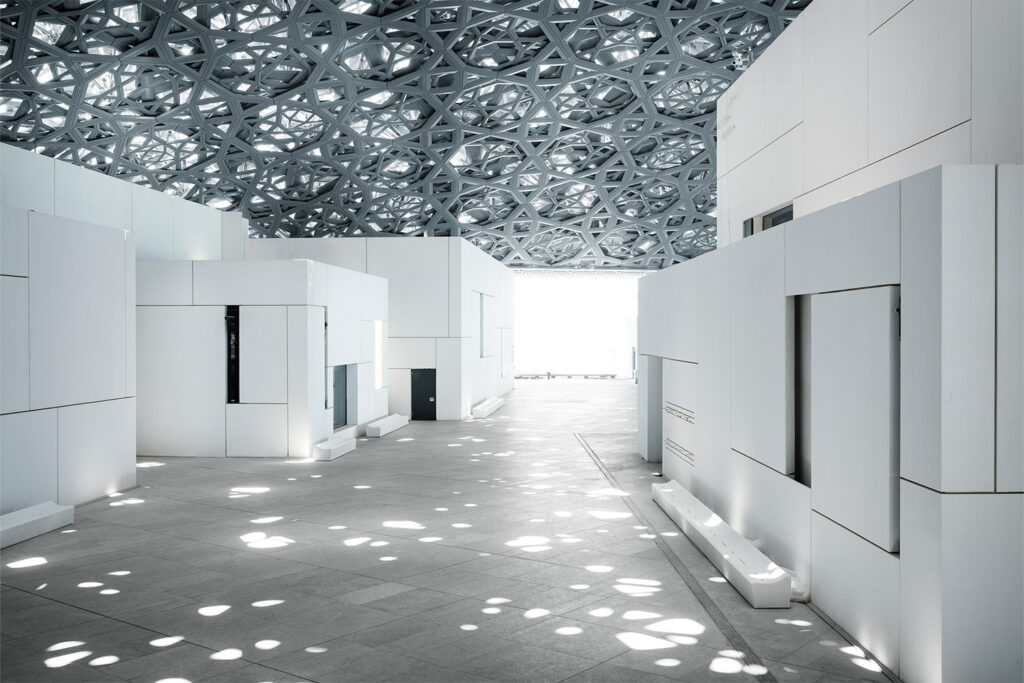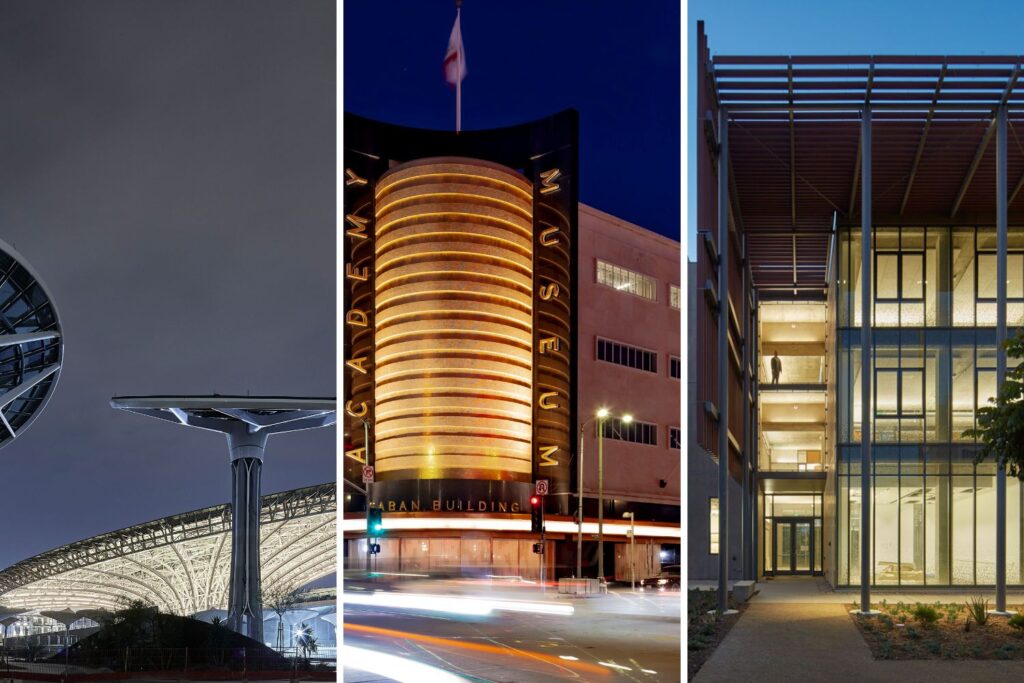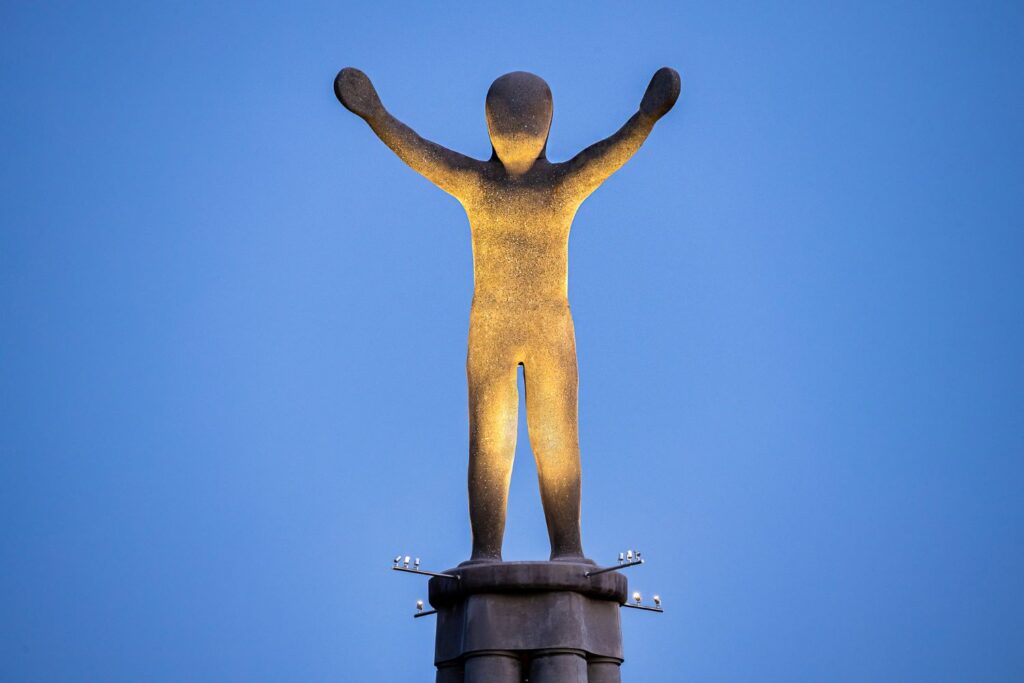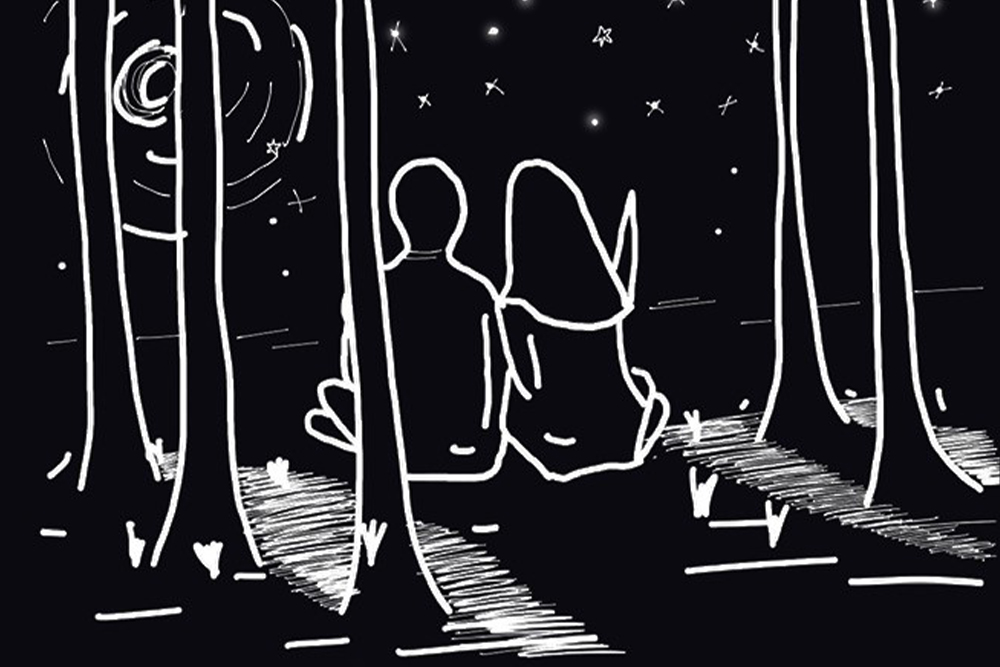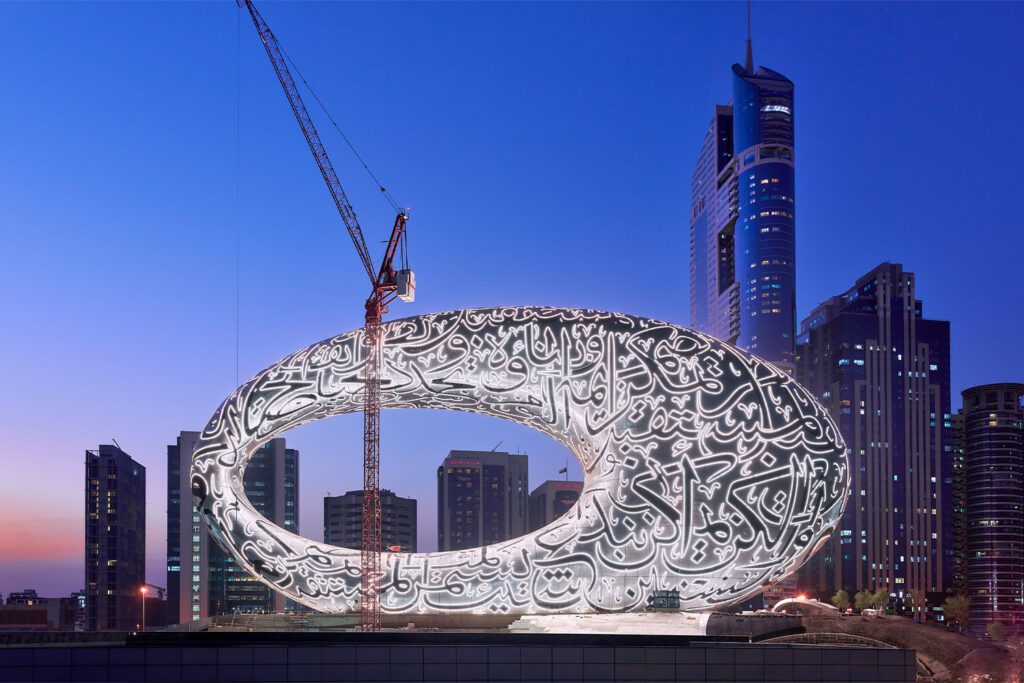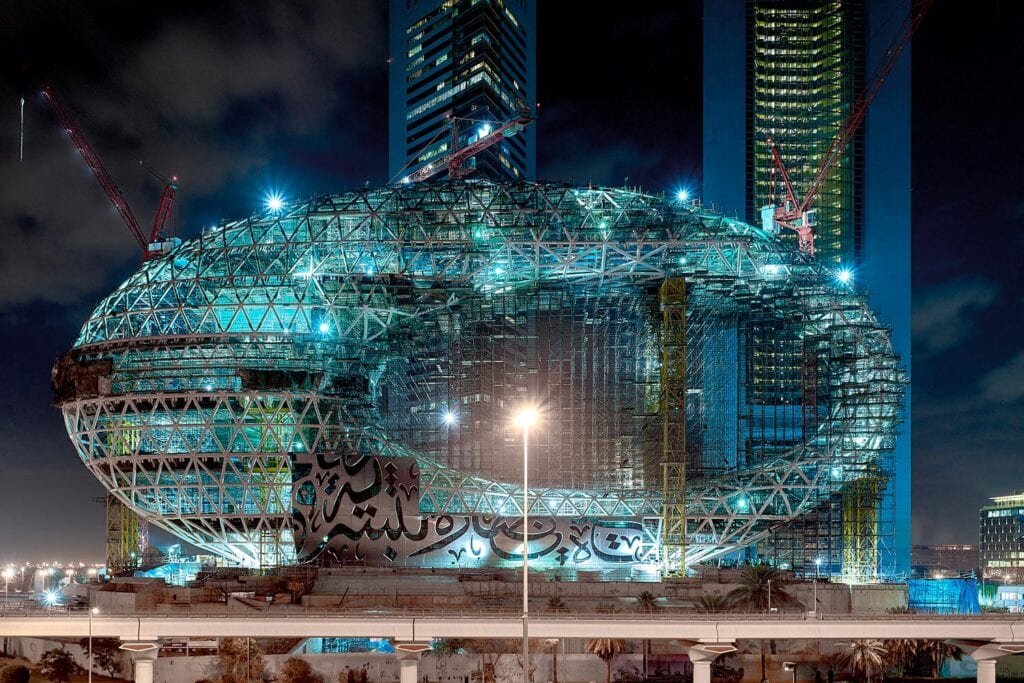The history of museum daylighting
It is well known that there is a strong relationship between art and emotion. Art can tell us a story that evokes a feeling. At Buro Happold, we take inspiration from this symbiosis between art and emotion to rethink daylight design as a journey of discovery and surprise in museums and galleries.
We focus on peoples psychological and visual experience to enable them to view art in a dynamic and inspirational environment. The function of museums and their relationship to the public realm has varied throughout history. The architecture and daylight conditions in each historical period were influenced by the intended social and economic impact.
This article explores the evolution of museums and their relationship with architecture and daylight.
Translating daylight into experience
Daylight shapes our experience. However, due to its varying quality, a space and the objects displayed within that space are never experienced in the same way.
Daylighting is the controlled admission of direct sunlight and diffused skylight into a building to create a visually stimulating environment.
Discover how the most common ways of introducing daylight into a space can change our experience.

Side lighting
Main daylight features
South facing windows; Clear window; Direct sunlight + diffused skylight; Light/shadow patterns; Longer shadows in winter and morning hours
Main daylight features
South facing windows; Diffused window; Diffused light only; Soft shadows
5am
9am
12pm
3pm
6pm
Top lighting
Main daylight features
Clear skylight; Direct sunlight + diffused skylight; Light/shadow patterns; Shadows on the floor during summer and higher in the room during winter
Main daylight features
Diffused skylight; Diffused light only; Uniform distribution of light; Soft shadows
5am
9am
12pm
3pm
6pm
Egypt (Hellenistic)

A philosophical school
The home of the Hellenistic era is considered to be Alexandria. In the Hellenistic era, Mouseion functioned mainly as centres of artistic and scientific research. This attracted many Greek scholars that arrived at the Mouseion of Alexandria to work and study.
Architecture and daylight
Our knowledge of the ancient Mouseion is derived from ancient texts. The university consisted of a public walk, an exedra (a hall or arcade with seats for lectures and discussions) and a large building to house the scholars who resided there. Laboratories and botanical gardens existed in the building, with the ancient Library of Alexandria attached to it.
The scholars and the staff were able to access communal spaces and benefit physically and emotionally from the everchanging daylight conditions.
Renaissance

Private collections
Renaissance was the period of European cultural, artistic, political and economic “rebirth” following the Middle Ages. It is characterised by the rediscovery of art, literature and classical philosophy.
The closest thing to modern museums during this period were the cabinets of curiosities. These were assembled by curious noblemen, wealthy merchants and scholars. They were mainly private collections located in palaces open only to the collector and his immediate social circle. They were places to come together, learn and showcase the riches of the world.
Architecture and daylight
As the cabinets of curiosities were private collections, their displays varied. In some cases, the collector stored the items in literal cabinets, fitted with cupboards and drawers, whereas others were rooms stuffed with animal, mineral, vegetal, and artistic treasures.
Use of the space dictated the lighting. During the day, light entered the space via windows. As a result, the artefacts were exposed to daily, seasonal variations in weather patterns, which affected the availability and directionality of the daylighting. In order to avoid glare and unwanted reflections, shutters and curtains were introduced.
During the hours of darkness, the rooms were lit by candles or oil lamps, creating low level light conditions with strong shadows and stark contrasts.
18th century

Public institutions
During the 18th century, there was a shift from private collections to the founding of public museums. The intention was to improve the levels of education and culture to encourage the spread of information and increase engagement in society. During this time, world-class museums were founded like the British Museum in London (1759) and the Louvre in Paris (1793). However, those that visited museums still tended to be the aristocracy and ruling classes, which reduced the intended social impact.
Architecture and daylight
The architecture of the museums progressed from private palaces to purpose-built museums. As these public institutions were never open after dusk, they placed more emphasis on improving daylight conditions. Lighting in art galleries progressed from simple side lighting to clerestory windows, roof lights and lanterns. The use of top light offered better distribution in the rooms and better view- ing conditions, minimising glare and reflections associated with the sunlight from windows.
19th century

The social inclusion
In an effort to widen the audience of museums and increase accessibility, the first international trade fair was held in 1851 in Crystal Palace, London. The target audience was the artisans and craftsmen who had been excluded from the elite museums, and therefore it was more affordable.
In 1857, the Crystal Palace Museum and the South Kensington Museum (now known as the V&A), opened its doors. Objects of craft and industrial arts (as opposed to “fine” arts) were now on display to the general public. The exhibits aimed to educate visitors in art and design. By extending the opening hours to weekends, holidays and evenings, the Director of Victoria and Albert Museum Henry Cole welcomed and encouraged working class people to visit.
Architecture and daylight
The use of top-lit galleries (that began in the 18th century) progressed rapidly during the 19th century. The first theories on optimal gallery daylighting emerged in an attempt to explain and improve daylighting. F.P. Cockerell in 1850 and Weissma in 1895 both established the principle of directing light onto walls by investigating the geometry of gallery wall sections.
Moreover, the V&A was the first public institution to introduce artificial gas lighting to accommodate the extended opening hours.
20th century

Conservation movement
During the 20th century, museums became an educational facility and leisure activity. Following the Second World War, museums responded to a changing and more educated society.
The conservation movement contributed to the development of museums as a response to increased awareness of the environment and the need to preserve it.
Architecture and daylight
A significant change emerged during the second half of the 20th century, when the importance of protecting the light-sensitive artwork from deterioration was prioritised. Many art galleries started excluding natural light in an attempt to create a more controlled environment.
However, the continuous control of light to fixed levels attracted criticism from the public. The monotonous environment with little relief or variation resulted in museum fatigue.
This design approach disconnected the galleries from the outdoor environment, which in turn limited the embodied experience of the visitors.
21st century

More than containers of art
Today, museums are much more than buildings which preserve art. The role of the museums has changed drastically. Museums can bring people together through public events, workshops and lectures. They are centres for learning, community and social hubs. Museums and galleries bring communities closer and strive to welcome everyone. They have a significant social and economic impact.
In recent years, museums have become increasingly engaged with embodied, sensory and emotive forms of knowledge, with personal experience being considered as paramount.
Architecture and daylight
In the 21st century, museums are more considerate and aware of visitors’ emotional experience. Museums and galleries promote mental health and wellbeing for visitors and museum staff by allowing daylight in the exhibition spaces. The visitor is placed in the centre of the designs and feels included. A multi-layered design considers the visual perception of the exhibits, their conservation and the visitors’ emotional response to the museum.
How can we help?
Daylight is a crucial part of the entire visitor experience at museums. Daylight design contributes towards making every visit a journey of discovery. We are biologically connected to daylight. Light is the medium of visual expression, both emotionally and epistemologically. It is essential for understanding the world around us.
Emotion is the multisensory experience of someone interacting with things in their environment. The intelligent use of daylight can provide visitors with enhanced visual conditions to appreciate the artwork, as well as improved exterior views and connection to the outside world. These factors can lead to a better psychological state in which visitors can absorb and interpret the art in a more immersive way.
Our specialist skills and experience in daylighting design deliver innovative proposals with layers of creativity and functional elements that both satisfy technical aspects and create a high-quality outcome. Our designs promote inclusion, enhance visitor experience, strengthen relationships within communities and provide a relaxed and comfortable experience.
This article is the first in a series of features that describes how we translate the science of daylight into how we experience the world around us. Look out for our social media posts to find out more about how daylight design can impact the experience of museums visitors.





